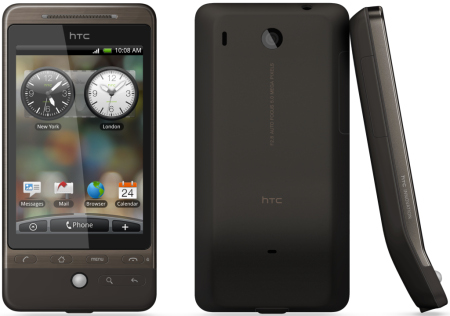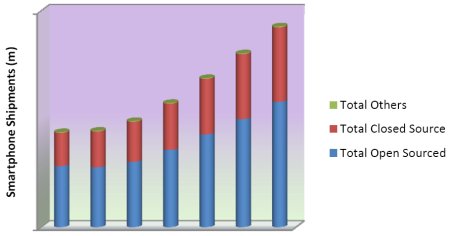223 million open source smartphones by 2014?
Jul 6, 2009 — by Eric Brown — from the LinuxDevices Archive — views Shipments of smartphones with open source operating systems (OSes) will jump from 106 million this year to 223 million by 2014, according to a Juniper Research report. Meanwhile, Research and Markets has released its own study on mobile open source OSes.
Shipments of smartphones with open source operating systems (OSes) will jump from 106 million this year to 223 million by 2014, according to a Juniper Research report. Meanwhile, Research and Markets has released its own study on mobile open source OSes.
Both reports focus on Android's Open Handset Alliance (OHA), the LiMo Foundation's LiMo spec, and the upcoming non-Linux contender, Nokia's open source version of Symbian, which has yet to ship.
Neither report appears to have much to say about the latest Linux contender, the WebOS platform built into the new Palm Pre smartphone. It remains to be seen how far Palm will go toward offering WebOS as a fully open source stack, however. (The company has published the source code for the open source portions of the stack as a first step, and has indicated it will offer an open API to encourage third-party app development.)

HTC's latest Android smartphone, the Hero
(Click to enlarge)
Yet according to recent reports, only parts of the OS will be made open source by the end of the year, and Symbian may not be fully open source for at least another year. In other words, Juniper's 2014 estimates of 223 million open source smartphones may be on target, but the 2008-2010 estimates are somewhat misleading.

Total number of smartphone shipments split by open source and closed source OS, 2008-2014
(Source: Juniper Research)
This statement, however, begs the question "the key to what?" There would appear to be a significant difference between offering a relatively open development platform versus enabling third parties to actually modify the OS code itself and build their own smartphones based on it, as guaranteed by OHA and LiMo.
Research and Markets study
Research and Markets did not release forecasts derived from its own new mobile open source study, which appears to cover similar territory as the Juniper report. According to the research firm, Android, LiMo, and open Symbian are fully analyzed in the study, including history, overview, indicative handset vendors, technical details, and licensing processes. The report is also said to include an overview of proprietary smartphone OSes.
Key questions explored in the study are said to include:
- How has the recent trend towards open source impacted the rest of the value chain?
- How will the fortunes of the main players in the operating systems market develop over the next six years?
- How will the increasing openness in the operating systems market effect network operators?
- Why has the importance of the operating system risen from the invisible to the unavoidable?
- Will all the current operating systems survive over the forecast period?
- Why did Nokia buy Symbian and give away all of its technology?
Availability
More information on the Juniper study, "Mobile Open Source Operating Systems: Markets & Opportunities 2009-2014," should be available here. More information on the Research and Markets report, which is titled identically, may be found here.
This article was originally published on LinuxDevices.com and has been donated to the open source community by QuinStreet Inc. Please visit LinuxToday.com for up-to-date news and articles about Linux and open source.